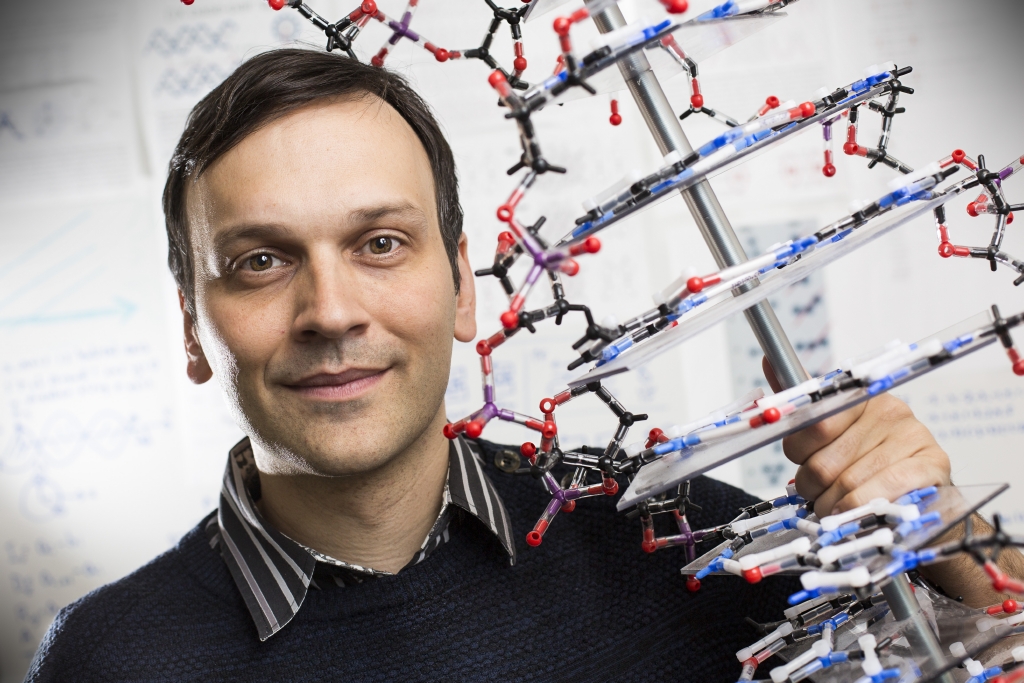Grant for RNA Origami Research
Asst. prof. Ebbe Sloth Andersen aims to take biological nanostructure research into a new phase in the field of synthetic biology – a field which may ultimately have enormous significance for the medicine, energy, food and agriculture of the future.


The European Research Council (ERC) will support the research with EUR 2 million.
With this Consolidator Grant Andersen aims to develop his research on ‘RNA origami’, a promising new technique within synthetic biology, a new field of research that may ultimately lead to cheaper and better medicine, sustainable fuel production, healthier crops and clean water, to name just a few examples.
“With this technique, I believe that we can organise and program biological processes in a completely new way, which will contribute to the development of the field of synthetic biology,” says Andersen.
The technique with the evocative name RNA origami is an internationally recognised method Andersen has developed in his research group. The method derives its name from the Japanese art of folding paper, origami, which transforms a single piece of paper into a complex figure using geometrically folded forms and patterns. In RNA origami, a single RNA molecule is folded into a well-defined nanostructure, for example a box. In this case, the forms and patterns are encoded into the RNA itself, and the desired structure is created on the basis of the code.
Read the whole article at AU news
Contact
Assistant professor Ebbe Sloth Andersen
iNANO and Department of Molecular Biology and Genetics
Aarhus University, Denmark
esa@inano.au.dk, +45 4117 8619
